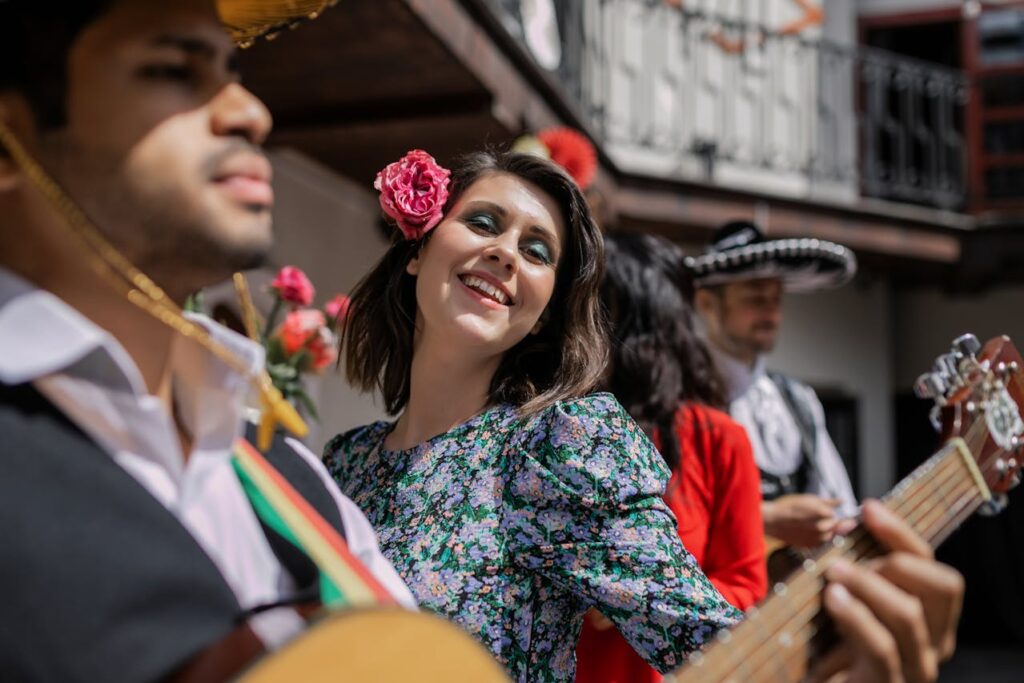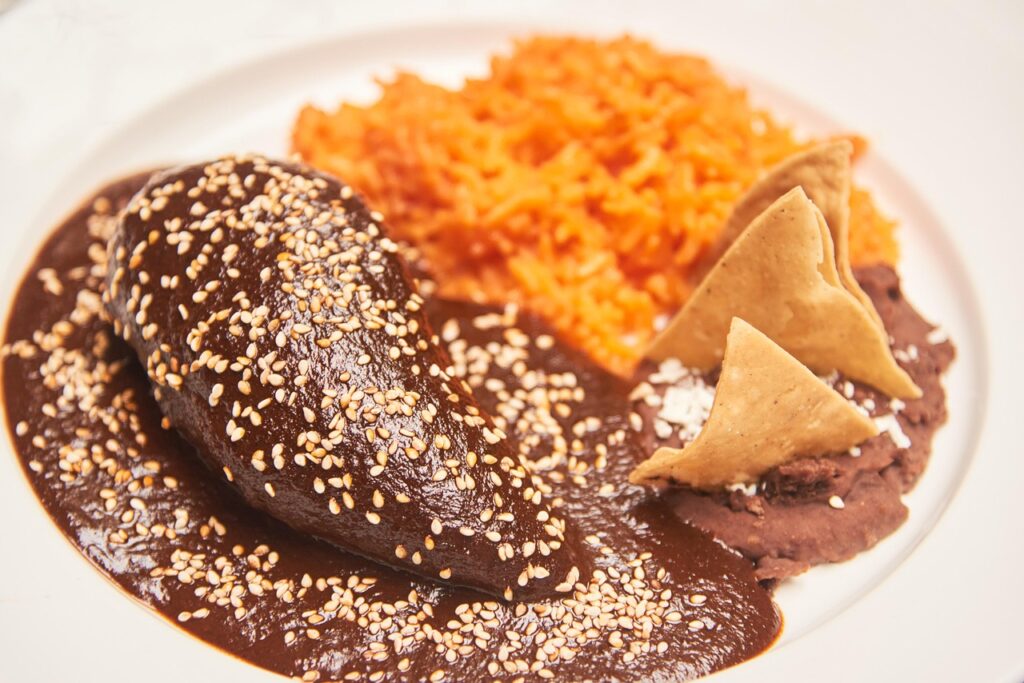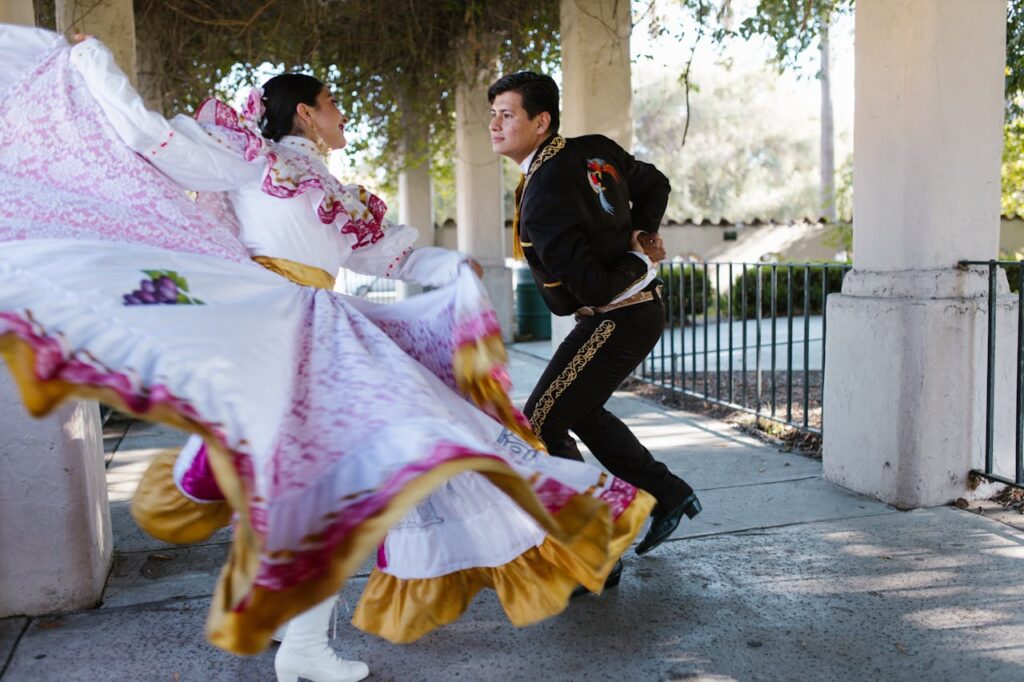
50+ Fascinating Facts About Cinco de Mayo You Didn’t Know
Facts About Cinco de Mayo
Surprisingly, facts about Cinco de Mayo are often misunderstood around the world. Many people think it marks Mexico’s Independence Day, but in reality, this Mexican holiday has a very different origin.
On the fifth of May, Mexicans commemorate a historic military victory over the French troops during the Franco-Mexican War.
However, what makes this celebration fascinating is not only its historical roots but also its evolution into one of the biggest Cinco de Mayo celebrations across the United States. Showcasing Mexican culture, live music, street festivals, and traditional food.
Interestingly, the day of the Battle of Puebla holds more cultural than political weight. While not a national holiday in Mexico, it is celebrated passionately in the state of Puebla. Where the city of Puebla and Puebla de Zaragoza honor the courage of Mexican troops. Who achieved an unexpected victory against a much larger French army on the morning of May 5th, 1862.
Therefore, understanding the true facts about Cinco de Mayo means diving deeper into its historical events, cultural significance, and how it became a global celebration of Mexican heritage and Mexican-American culture.
Historical Background: The Origins of Cinco de Mayo
The Franco-Mexican War and the Famous Battle
The roots of Cinco de Mayo lie in the Franco-Mexican War, which began after Mexico was unable to repay debts owed to European nations. As a result, French soldiers invaded under Napoleon III, hoping to establish French rule in the Americas.
On the morning of May 5th, 1862, Mexican soldiers led by General Ignacio Zaragoza faced off against the much larger and better-equipped French troops in the city of Puebla. Against all odds, the Mexican army’s victory became a symbol of resistance against foreign domination.
Moreover, the battle highlighted the strength and unity of the Mexican people. Even though France eventually established the short-lived French Empire in Mexico, the victory at Puebla inspired resistance movements that played a role in shaping Mexican history.
A Common Misconception: Not Mexico’s Independence Day
One of the most important facts about Cinco de Mayo is that it is not Mexico’s Independence Day. That milestone, celebrated on September 16th, is tied to the Cry of Dolores (Grito de Dolores). When Father Hidalgo called for freedom from Spanish rule.
Yet, due to popular belief, many confuse the anniversary of Mexico’s independence with the celebration of Cinco de Mayo. In reality, the day of the Battle of Puebla is distinct from the Mexican Revolution, Porfirio Díaz’s era, or any other major holiday in Mexico.
Cultural Significance in Mexico
Local Celebrations in Puebla
In Mexico, the largest focus remains in the state of Puebla. Particularly in Puebla de los Ángeles (today’s Puebla de Zaragoza). Each year, residents remember the military victory with military parades. Reenactments of the famous battle, and displays of the colors of the Mexican flag.
Moreover, traditional Mexican clothing, mariachi bands, and traditional music fill the streets during the early evening, creating a vibrant atmosphere of unity.
Could you give this article Interesting Facts About Mexican Culture (Read The Best 88) a read when you can? It offers some additional insights on the topic.
The Role of Traditional Food
Equally important, traditional food plays a central role in the celebration of Cinco de Mayo. Among the most symbolic dishes is mole poblano, often referred to as the official dish of Cinco de Mayo.
According to Smithsonian Magazine, Puebla’s mole is made with chili peppers, spices, and even Mexican chocolate. Representing centuries of Mexican heritage blending indigenous and Spanish influences (Source: Smithsonian).
Therefore, enjoying dishes like mole connects the celebration to the rich flavors of Mexican food. Emphasizing cultural pride and culinary tradition.
Cinco de Mayo in the United States

The Rise of a Celebration Beyond Borders
Over time, facts about Cinco de Mayo became just as relevant in the United States as in Mexico. During the 20th century, the celebration grew in popularity among Mexican Americans. Who saw it as a way to honor their Mexican heritage and preserve their cultural traditions.
Interestingly, the Chicano Movement of the 1960s and 1970s amplified the importance of the holiday. For many chicano activists, the celebration of Mexican-American culture became a powerful reminder of unity, resilience, and identity in a foreign land.
Fiesta Broadway and Other Major Celebrations
One of the biggest Cinco de Mayo celebrations in the U.S. takes place in Los Angeles. Known as Fiesta Broadway, it has drawn thousands of visitors each year since the early 1990s.
Similarly, San Antonio, with its deep ties to Mexican culture, hosts vibrant festivals. Filled with mariachi music, street festivals, and colorful displays of the colors of the Mexican flag.
Mexico City, the capital, also hosts vibrant Cinco de Mayo festivities with concerts and cultural events that highlight Mexican heritage.
Moreover, even the Cayman Islands and some South American countries have joined in hosting annual celebrations, proving how far-reaching the influence of this Mexican holiday has become.
Commercial Expansion and Popular Belief
Unfortunately, commercialization has shaped how many people perceive the holiday. Beer companies, restaurants, and marketing campaigns often capitalize on the celebration of Cinco de Mayo to sell products. While this boosts visibility, it can overshadow the true historical events behind the day.
Therefore, spreading accurate facts about Cinco de Mayo is essential to avoid reducing it to just another festive occasion. Instead, recognizing the cultural significance keeps the tradition meaningful.
Unique Traditions and Modern Celebrations

Street Festivals and Music
In many U.S. cities, the largest Cinco de Mayo celebration includes live music, mariachi bands, and traditional music performances that last until the early evening. Additionally, street festivals often feature traditional Mexican clothing, dancers, and parades that honor the historical events tied to the day of the Battle of Puebla.
Fun Facts and Unusual Events
Interestingly, some celebrations have added quirky elements. For example:
- The running of the chihuahuas, a playful race featuring small dogs, has become popular in several U.S. cities.
- An annual air guitar competition is sometimes held in honor of the celebration of Mexico.
- Millions of pounds of avocados are consumed on May 5th, making guacamole one of the most popular foods tied to the holiday.
Indeed, such interesting Cinco de Mayo facts show how traditions continue to evolve while keeping the cultural significance intact.
Political and Historical Connections
The Good Neighbor Policy and U.S. Influence
During the 1930s, President Roosevelt promoted the Good Neighbor Policy, which encouraged closer cultural ties with Latin America. In this context, the celebration of Cinco de Mayo gained greater visibility in the U.S., supported by United States Congress as a symbol of cooperation and friendship.
Connections to the Civil War
Another lesser-known fact is that the famous battle of Puebla happened while the United States was engaged in the Civil War.
At that time, U.S. leaders worried about European powers gaining influence in the Americas. Therefore, Mexico’s victory indirectly supported U.S. interests by weakening the expansion of the French Empire in the region.
Misconceptions and Clarifications
Common Misconceptions About Cinco de Mayo
One of the most frequent interesting facts is that many people mistakenly believe Cinco de Mayo is Mexico’s Independence Day.
In truth, the anniversary of Mexico’s independence is observed on September 16th, when the Cry of Dolores (Grito de Dolores) sparked the revolt against Spanish rule.
Mexican Independence Day, celebrated on September 16th, marks the start of the fight against Spanish rule and is often confused with Cinco de Mayo.
Therefore, the celebration of Cinco de Mayo is not tied to the beginning of the Mexican Revolution, nor is it connected to the downfall of Porfirio Díaz.
Instead, it solely commemorates the day of the Battle of Puebla, an unexpected victory that proved vital in shaping Mexican history.
Distinguishing Between Major Holidays
Another common misconception is assuming that Cinco de Mayo is a federal holiday or national holiday in Mexico. In fact, outside of the state of Puebla, the day often passes quietly, with schools and businesses operating normally.
By contrast, Mexico’s Independence Day involves nationwide military parades, fireworks, and celebrations that honor the Mexican people’s fight for freedom. Therefore, it’s important to distinguish between these separate historical events when sharing facts about Cinco de Mayo.
Food, Drink, and Culinary Traditions

Traditional Food at the Heart of Celebrations
No discussion of facts about Cinco de Mayo would be complete without mentioning food. One dish that stands out is mole poblano, often called the official dish of Cinco de Mayo.
This rich sauce, crafted with chilies, spices, and Mexican chocolate, has become a culinary symbol of Puebla and a staple of Mexican culture.
Moreover, traditional food such as tamales, tacos, and enchiladas are also enjoyed during the celebration of Cinco de Mayo, both in Mexico and abroad. In many cities, food festivals highlight the depth of Mexican heritage and the artistry behind its cuisine.
Beverages and Festive Indulgence
Beyond food, beverages have also become tied to the holiday. In the U.S., beer companies often promote Cinco de Mayo as a drinking holiday, fueling its reputation for lively gatherings. While this commercial angle can sometimes overshadow history, it has undeniably expanded the holiday’s reach.
Meanwhile, in Mexico, family gatherings and small community events may feature traditional music, dancing, and food, with less focus on commercial consumption.
I’d recommend reading this article Interesting Facts About Alcohol (The Best 57). It could add some valuable context.
Music, Dance, and Clothing

Mariachi Music and Traditional Performances
Another core element of the celebration of Cinco de Mayo is mariachi music. Bands dressed in traditional Mexican clothing perform throughout festivals, adding energy and cultural pride to the atmosphere.
In addition, mariachi bands and folkloric dancers often perform reenactments of the famous battle, blending historical events with cultural entertainment.
Colors and Symbols
Equally significant are the colors of the Mexican flag—green, white, and red—which dominate decorations, parades, and costumes during the celebration of Mexico. These colors serve as visual reminders of unity, independence, and national pride.
Therefore, combining music, dance, and symbolism ensures the holiday remains a vibrant reminder of Mexican heritage.
How Cinco de Mayo Differs From Other Holidays
Comparing With St. Patrick’s Day
Just as St. Patrick’s Day has become a celebration of Irish identity in the U.S., Cinco de Mayo has grown into a celebration of Mexican-American culture. However, while St. Patrick’s Day began as a religious feast, Cinco de Mayo is rooted in military victory and political resistance.
Interestingly, both holidays share a pattern of evolving beyond their original meaning to become global expressions of cultural pride.
Other Latin American and South American Observances
Unlike some Latin American countries that celebrate their independence or other national milestones, Cinco de Mayo is unique in honoring a specific famous battle. In South American countries, the holiday is not widely observed, which highlights its special connection to Mexican troops and the city of Puebla.
Political Figures and Their Roles
President Juárez and His Leadership
Central to the facts about Cinco de Mayo is the leadership of President Juárez. At the time of the invasion, Benito Juárez faced enormous challenges, including foreign debt, political instability, and pressure from European powers.
Despite these obstacles, he supported the resistance led by General Ignacio Zaragoza, who guided the Mexican forces to victory on the morning of May 5th.
Therefore, Juárez is remembered as a symbol of resilience, embodying the determination of the Mexican people to protect their sovereignty.
General Ignacio Zaragoza: The Hero of Puebla
The famous battle could not have been won without General Ignacio Zaragoza. Though his troops were poorly equipped compared to the French army, his leadership ensured that the Mexican army’s victory would echo throughout Mexican history.
Tragically, Zaragoza died only a few months later, but his legacy lives on in the name Puebla de Zaragoza, honoring his decisive role.
Expansion of Celebrations in Modern Times
Annual Celebrations Around the World
While originally a local commemoration, the celebration of Cinco de Mayo has spread to become a global event. From New York City to Chicago, from San Antonio to the Cayman Islands, communities now organize annual celebrations with street festivals, traditional food, and live music.
Interestingly, in some places, it has been blended with local customs. For instance, annual air guitar competitions and quirky events like the running of the chihuahuas showcase how the holiday continues to evolve in creative ways.
Cinco de Mayo as Cultural Education
Additionally, schools and cultural centers use the holiday as an opportunity to teach Mexican history and the cultural significance of the battle. Lessons highlight the foreign domination faced during the 19th century, the bravery of Mexican soldiers, and the long-term impact of the Franco-Mexican War.
Therefore, the celebration of Mexican-American culture becomes both entertaining and educational, strengthening ties between generations.
Interesting Cinco de Mayo Facts for Quick Learning

Here are quick interesting Cinco de Mayo facts:
- It is not Mexico’s Independence Day—that’s celebrated on September 16th.
- The holiday honors the Mexican army’s victory over French troops on May 5th, 1862.
- The battle took place in the city of Puebla, now called Puebla de Zaragoza.
- The official dish of Cinco de Mayo is mole poblano.
- The largest Cinco de Mayo celebration outside Mexico happens in Los Angeles at Fiesta Broadway.
- In the U.S., more than 80 million pounds of avocados are consumed on the holiday.
- It was boosted in the U.S. by President Roosevelt’s Good Neighbor Policy in the 1930s.
These fun facts make it clear why the celebration of Cinco de Mayo has gained worldwide recognition.
Broader Cultural Impact
Influence on Mexican-Americans
For Mexican Americans, the holiday is a way to embrace both identities. The blending of Mexican heritage and American culture is reflected in annual celebrations, food festivals, and gatherings that emphasize unity.
The Role of Chicano Activists
Moreover, the role of chicano activists in the 20th century cannot be ignored. Their efforts to highlight historical events and the cultural significance of the holiday elevated its place in U.S. society, ensuring that it became more than just a commercialized event.
Frequently Asked Questions About Cinco de Mayo
Why is Cinco de Mayo celebrated?
Cinco de Mayo is celebrated to honor the Mexican army’s victory over the French troops at the Battle of Puebla on May 5th, 1862. It symbolizes resilience and national pride rather than independence.
Is Cinco de Mayo the same as Mexico’s Independence Day?
No, this is one of the most common misconceptions. Mexico’s Independence Day is on September 16th, commemorating the Cry of Dolores, which began the fight against Spanish rule. Cinco de Mayo honors a specific famous battle.
Where is Cinco de Mayo celebrated the most?
In Mexico, celebrations are largest in the state of Puebla, particularly the city of Puebla. In the U.S., the largest Cinco de Mayo celebration happens at Fiesta Broadway in Los Angeles, with other big events in San Antonio, Chicago, and New York City.
What is the official dish of Cinco de Mayo?
The official dish of Cinco de Mayo is mole poblano, a flavorful sauce made with chilies, spices, and Mexican chocolate, especially popular in Puebla.
How do people celebrate Cinco de Mayo in the United States?
In the U.S., it is marked with street festivals, live music, mariachi bands, traditional food, and quirky events like the running of the chihuahuas. Many Mexican Americans also use the holiday to celebrate their Mexican heritage.
Why do Americans celebrate Cinco de Mayo more than Mexicans?
The holiday gained prominence in the U.S. due to the Chicano Movement, the Good Neighbor Policy, and commercial promotions by beer companies. For Mexican Americans, it became a symbol of identity and pride, while in Mexico it remains a regional observance.

Facts About Cinco de Mayo Conclusion
Ultimately, learning the true facts about Cinco de Mayo reveals that the holiday is far more than just an excuse for a party. It represents the courage of Mexican troops who stood against foreign domination and achieved an unexpected victory in the city of Puebla.
Although it is not a national holiday in Mexico, the day has grown into a global celebration of Mexican heritage, Mexican culture, and Mexican-American culture.
Moreover, the blending of historical events, traditional food, mariachi music, and vibrant street festivals ensures that the celebration of Cinco de Mayo continues to thrive.
Whether through the taste of mole poblano, the sound of mariachi bands, or the sight of the colors of the Mexican flag, the holiday remains a reminder of resilience, unity, and pride.
Therefore, when reflecting on this date, one should remember not only the fun facts and interesting Cinco de Mayo facts but also the deeper meaning behind the day of the Battle of Puebla.
The fifth of May is not just history—it is a living tradition that bridges Mexican history, Mexican-Americans, and all who celebrate the enduring spirit of Mexico.
Now that you know about Cinco de Mayo read this article Iconic Facts About South America (The Best 61 Disclosed).




